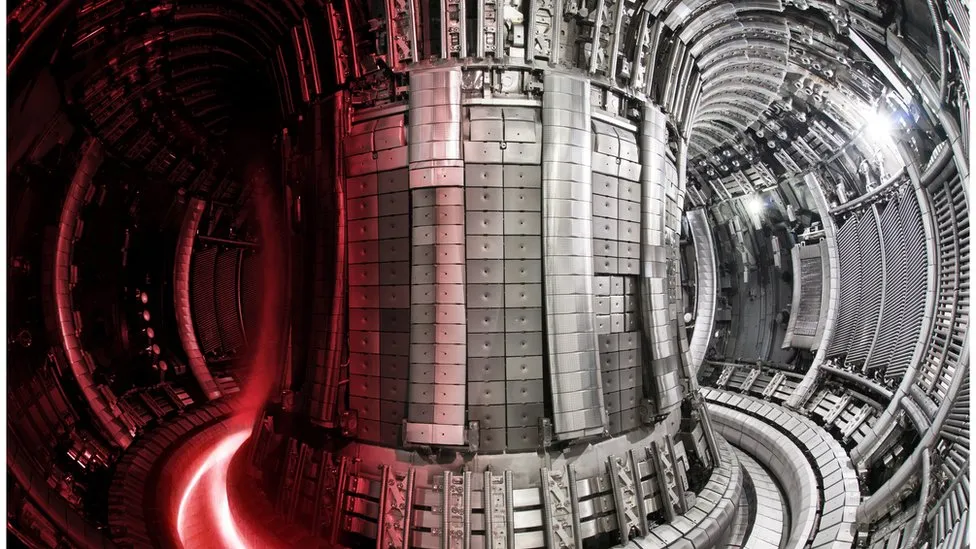 The UK-based Joint European Torus (JET) fusion facility at Culham near Oxford has played a vital role in the development of fusion energy. However, at the end of 2023 JET will be repurposed ready for decommissioning, which will last until around 2040. The first experiment in the world with a deuterium-tritium fuel mix took place at JET in 1991. Subsequent experiments have achieved higher energy yields, and the site holds the world record for the most energy produced from a fusion experiment - 59 megajoules (MJ) during a five-second pulse.
The UK-based Joint European Torus (JET) fusion facility at Culham near Oxford has played a vital role in the development of fusion energy. However, at the end of 2023 JET will be repurposed ready for decommissioning, which will last until around 2040. The first experiment in the world with a deuterium-tritium fuel mix took place at JET in 1991. Subsequent experiments have achieved higher energy yields, and the site holds the world record for the most energy produced from a fusion experiment - 59 megajoules (MJ) during a five-second pulse.
Over its lifetime JET has delivered crucial insights into the complex mechanics of fusion, allowing scientists to plan the international fusion experiment ITER and DEMO, the demonstration fusion power plant currently under design by the European fusion community.
As JET enters its final phase, it remains committed to supporting preparations for the operation of ITER through its final experiments, before embarking on a transition to become the world’s first fusion energy machine to be repurposed and decommissioned. As well as ITER and DEMO, this will have important implications for the UK’s STEP prototype powerplant to be built at West Burton, Nottinghamshire.
JET’s history includes numerous milestones, including:
- 1983: First plasma
- 1984: Official opening by Her Majesty Queen Elizabeth IIFrançois Mitterrand (President of the French Republic) and Gaston Thorn (President of the European Commission)
- 1991: First deuterium-tritium plasma created (DTE1); record 1.8 megawatts reached
- 1997: First deuterium-tritium experiments and world record 16.1 megawatts and 21.7 megajoules
- 2011: ITER-like metal wall installation completed
- 2021: Second deuterium-tritium experiments (DTE2) and world record for sustained fusion energy at high power producing 59 megajoules over 5 seconds, demonstrating fusion power plant potential.
To date, JET has produced over 103,000 ‘pulses’ or plasmas. The final deuterium-tritium experiments at JET are now being completed. These DTE3 experiments focused on three key areas: plasma science, materials science and neutronics. Lee Packer, Senior Fellow in Nuclear Science and Technology at UKAEA, said:
“JET’s final deuterium-tritium (DTE3) experiments will see unique and valuable research conducted by this collaboration in various crucial areas, particularly so in the field of neutronics, essential to understand to ensure the sustainability and cost-effectiveness of the technologies needed for fusion machines.
“Understanding how electronic components react to the characteristic neutron-rich environment presented by fusion is one such example, as it can influence how those components are designed, protected and incorporated within future fusion machines. The resulting data and learnings from these experiments are expected to be applicable across the fusion sector… and adjacent industries that need to use electronics in extreme environments.”
Decommissioning of JET will also provide valuable information for the fusion community. "The decommissioning will look at analysing what has happened to the [reactor] materials and how they have changed. This will help better maintain other fusion sites," said Fernanda Rimini, JET Senior Exploitation Manager.
The UK has now pulled out of the ITER project and the UK government has committed to spending £650m ($798m) on an alternative UK fusion programme between now and 2027including the new STEP prototype fusion energy plant.
Image: The JET tokamak reactor



